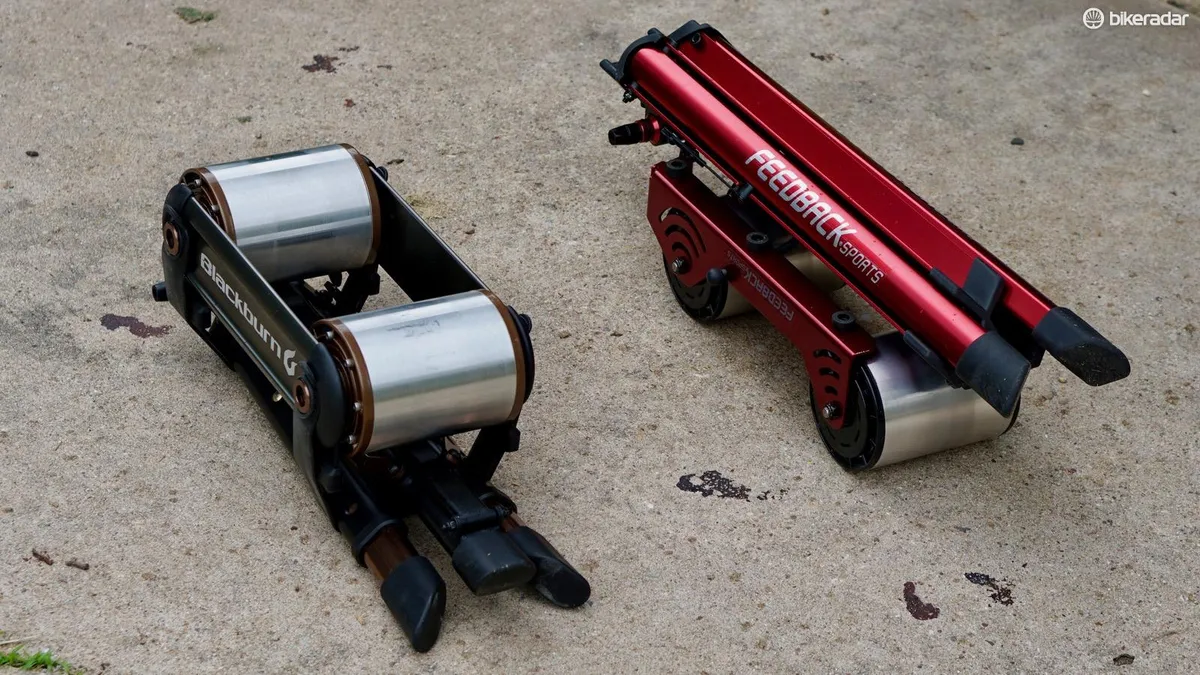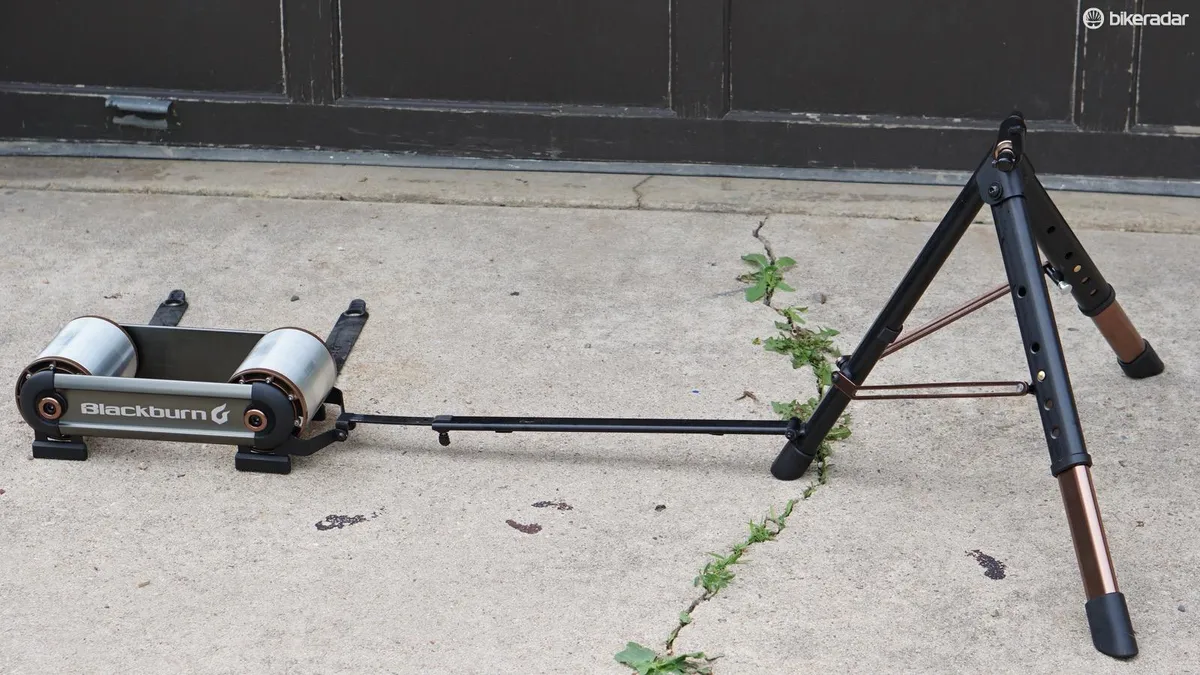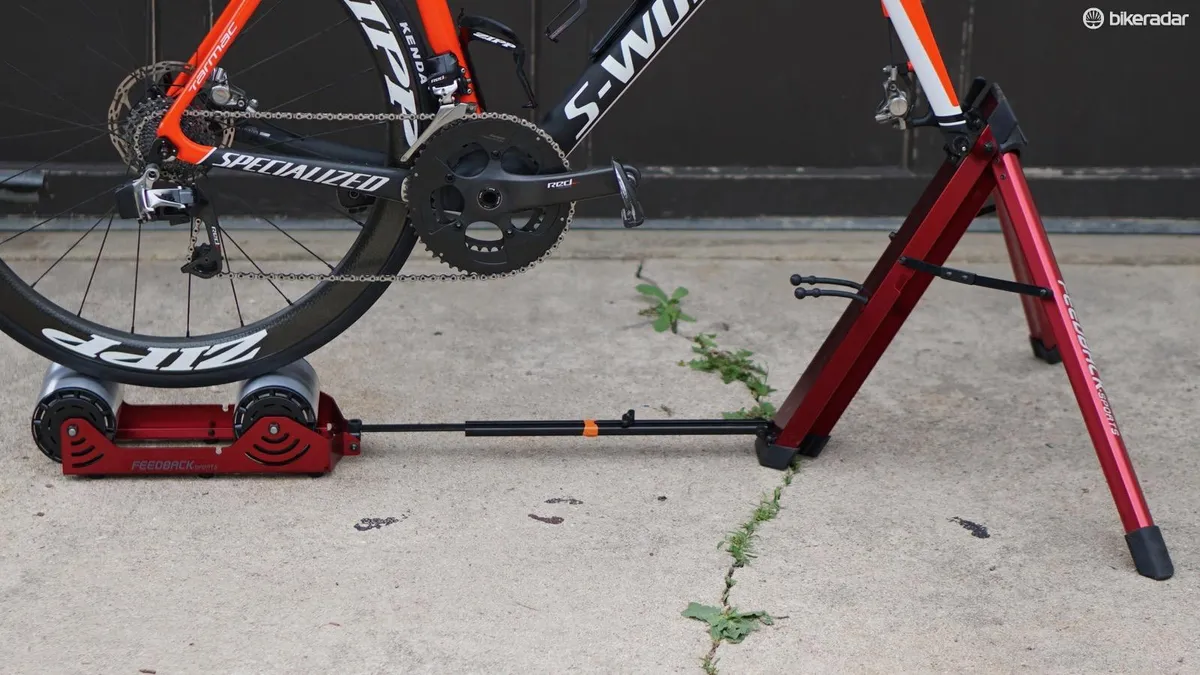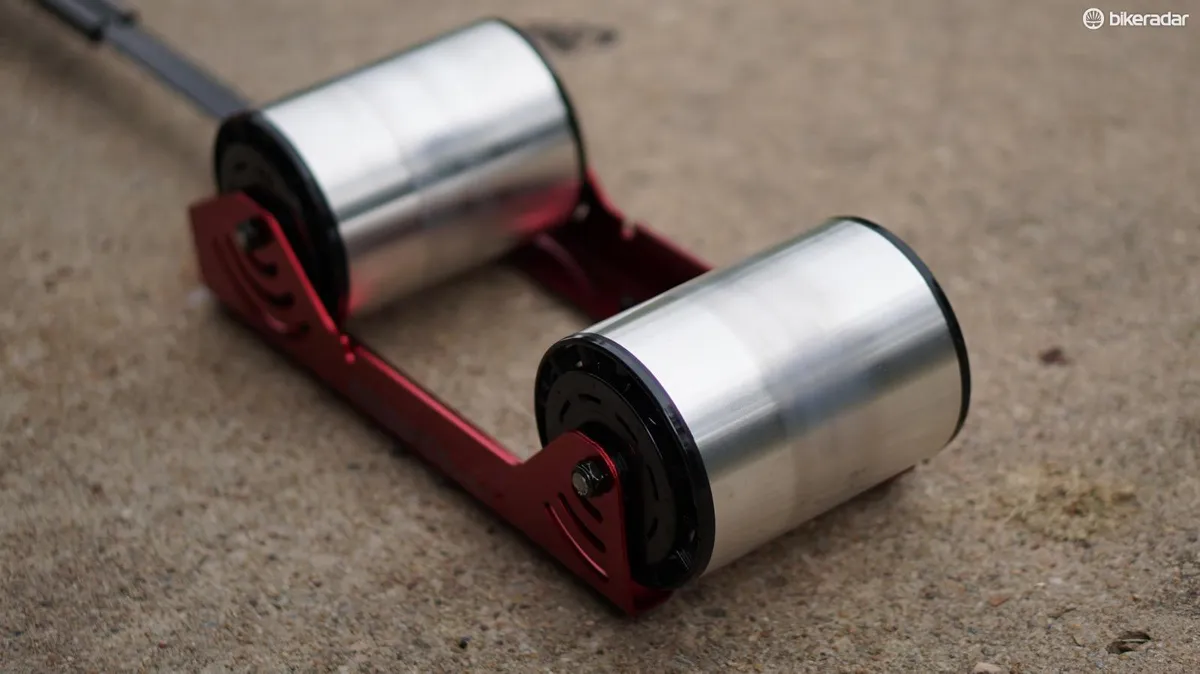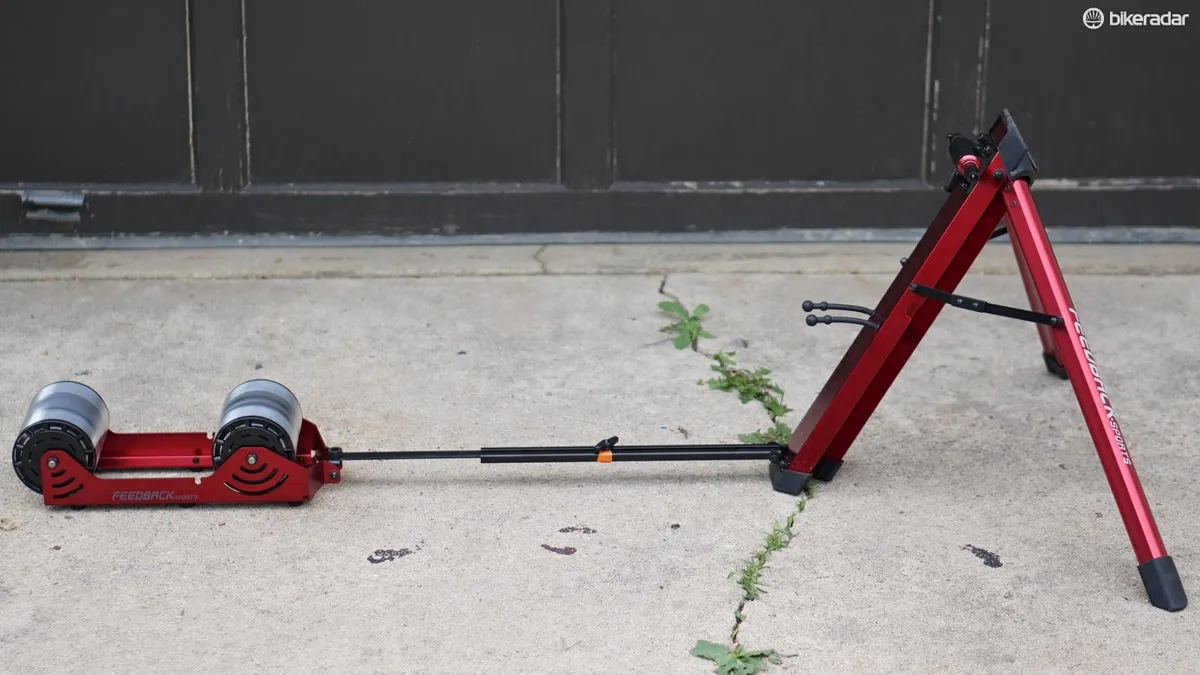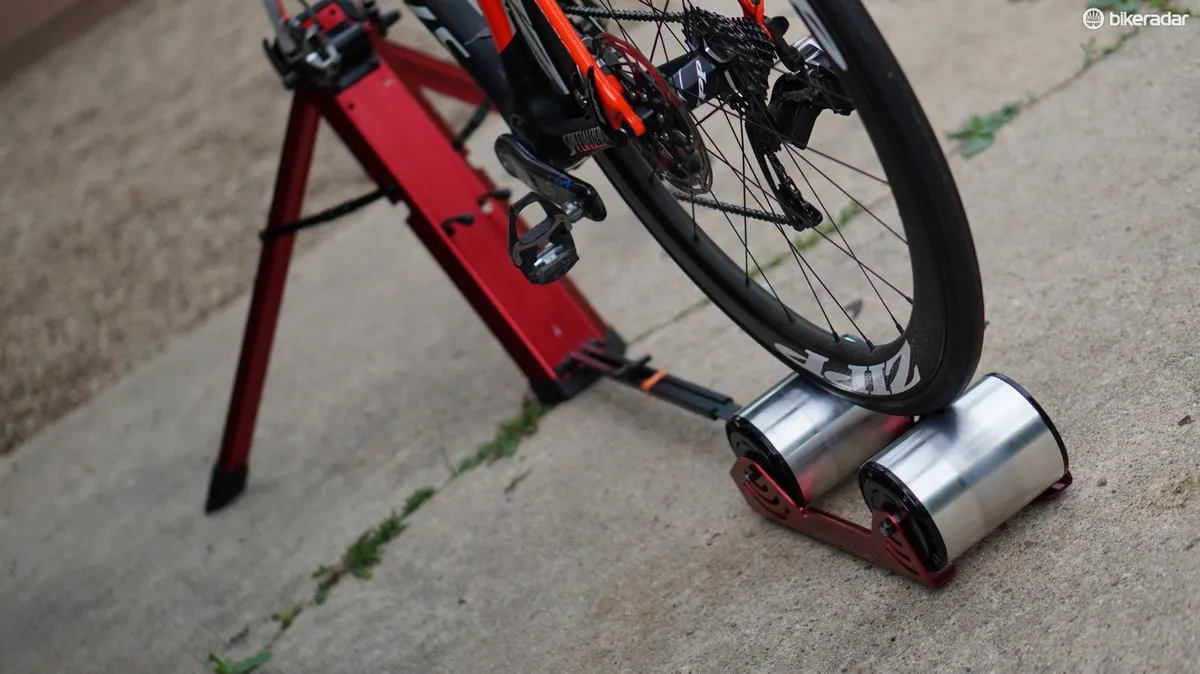Blackburn’s forthcoming Raceday Fluid is very similar to Feedback Sports’ Omnium portable rollers trainer, which has been around for a few years. But which is better? I tested the two back-to-back, and here is what I found.
The similarities
Both trainers use a tripod fork mount to stabilize the bike and a narrow set of rollers for resistance at the back.
Both are adjustable for wheelbase length via a sliding set of metal pieces, which are secured with a big screw.
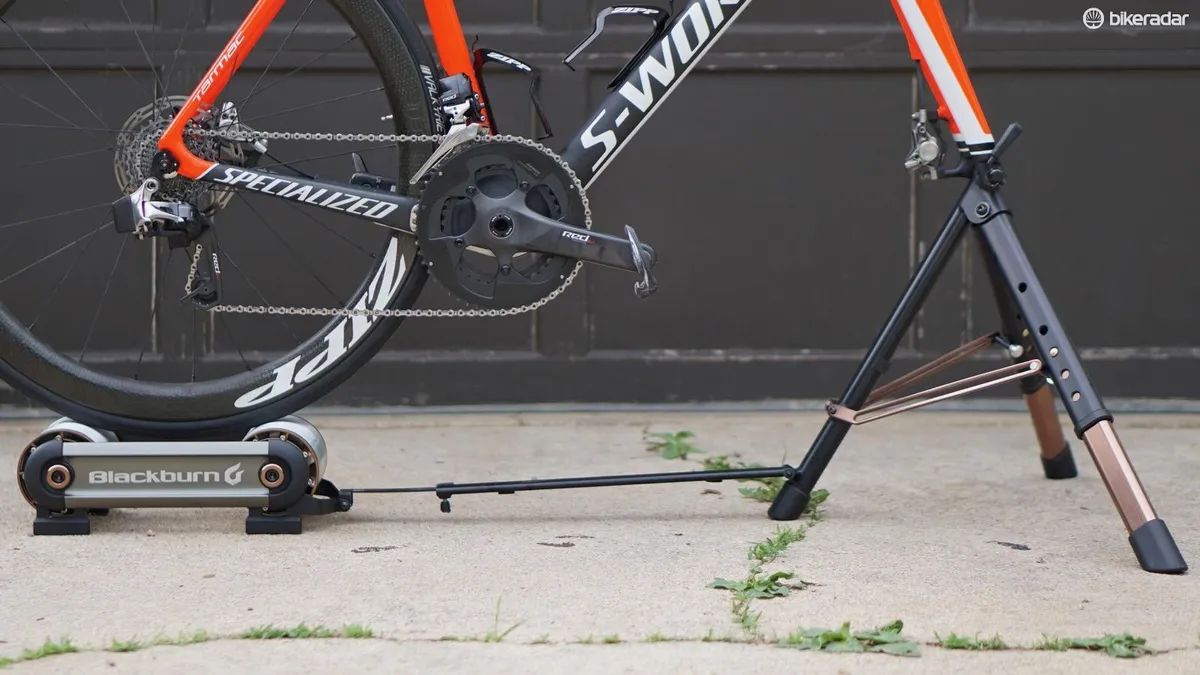
Both fold down for storage and transport and both come with a travel bag.
Both are also adjustable for height and for axle type (quick release and 12x100, 15x100, 15x110mm thru-axles), so they work with road, cyclocross and mountain bikes.
The specs
Array
The differences
The Blackburn weighs about 100g less and packs down a little smaller lengthwise.
The two trainers vary primarily by type and amount of resistance, stability and ease of height adjustment.
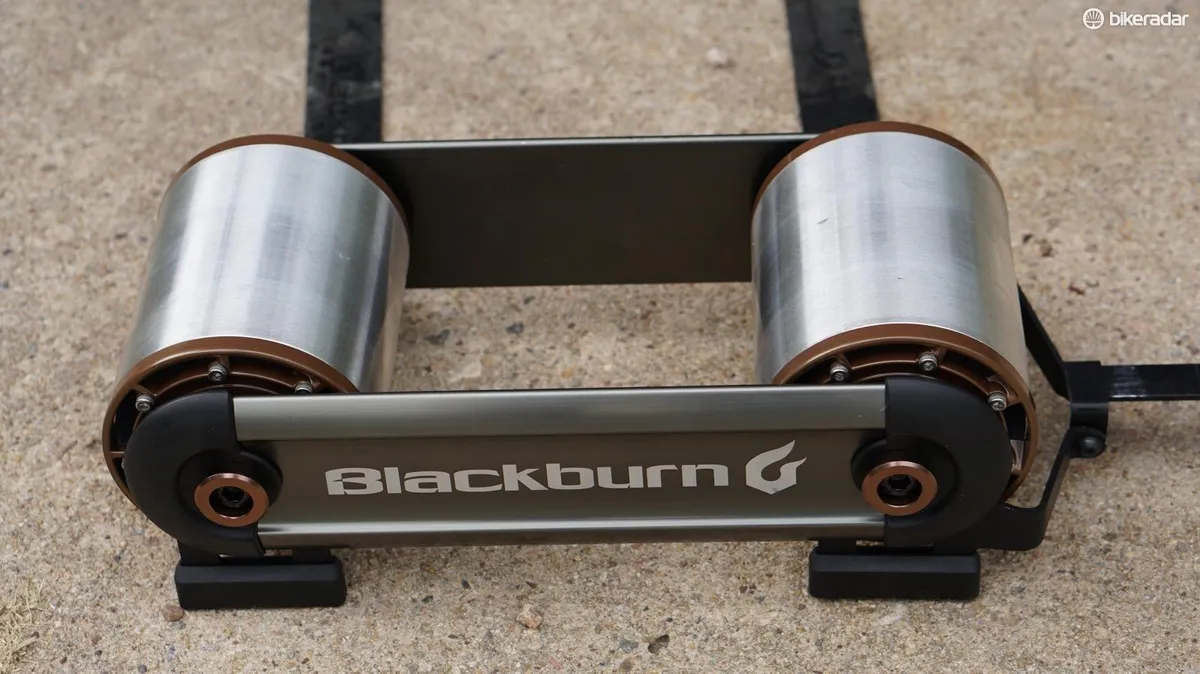
In my testing, the Ominum’s progressive magnetic units inside the 4-inch aluminum rollers provided more resistance than the Raceday. On paper, Blackburn claims its two fluid units offer a combined 650 watts at 40mph. And the Omnium's resistance at 40mph is a claimed 600w. But my experience was different.
On the Raceday I had to spin at my bike’s biggest gear (52x11) at 110rpm to hold 300w. By contrast, I could hold 300w on the Omnium at 100rpm in a smaller, 52x13 gear.
After this article originally published, Blackburn contacted me to say I had a pre-production unit, and that subsequent models will have more resistance.
Both trainers do have smooth, progressive and relatively quiet resistance.

The Raceday Fluid’s telescoping front legs are a blessing and a curse.
On the positive side, they are easy to adjust for height; press in the spring-loaded button on each leg and slide into the desired position.
Contrast that to the Omnium’s design of two Allen bolts, which have to be unscrewed and re-screwed to adjust the fork mount’s position.
However, the lower portions of the Raceday’s telescoping legs are a bit flimsy and I noticed them flexing under harder efforts.
For regular use that doesn’t involve adjusting the height, the Omnium is slightly faster to set up, as the solid legs just pivot out on guided hinges, while the Raceday Fluid uses pivots plus those spring-loaded buttons on each leg. That is a very small time difference, though.
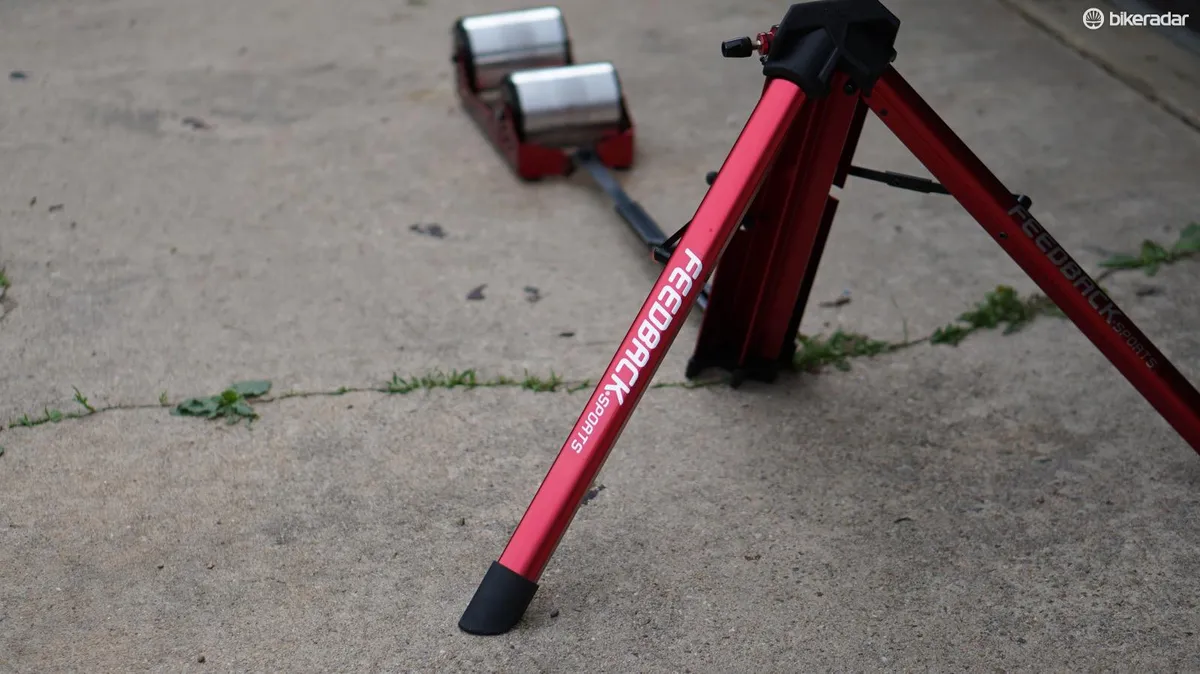
The bottom line
The Raceday Fluid is a blatant knock-off of the Omnium, but it is tidier when packed down and $30 cheaper.
Blackburn’s product might be better for riders who want to use it for multiple types of bikes without a lot of fuss because of the snap height adjustment.
The Omnium would be my choice, though, because there is more top-end resistance and the front end is sturdier.
If the primary use of these trainers is for pre-event warm-ups and cool-downs, then the Raceday has the right name but the Omnium has better function.

